Concrete Bench: Part 1
I have started construction on a piece that is pushing new ground for me. It is the first piece that I have designed without any wood. This is relevant only because I approach furniture design from the perspective of being intimate with my main material, wood. The concrete elements in my pieces have steadily evolved since I first used the material in 2005. The all concrete bench will be known as outdoor bench #7 and is currently in production with its predecessor, outdoor bench #6.
Here are some shots of the model

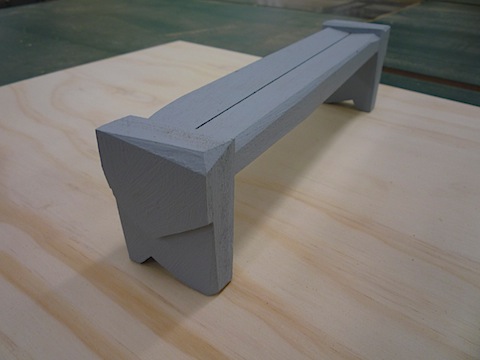
The detail on the legs are an evolution of the detail that was first developed for Outdoor Bench #6. That detail was first used in the big planter that I made for the Open Bowls show at the Longhouse Reserve. I mentioned before that Outdoor Bench 6 and 7 are being built at the same time. They both rely on that detail so I am glad that I had an opportunity to incorporate it into the planter. That experience gave me the confidence to move forward with both benches.
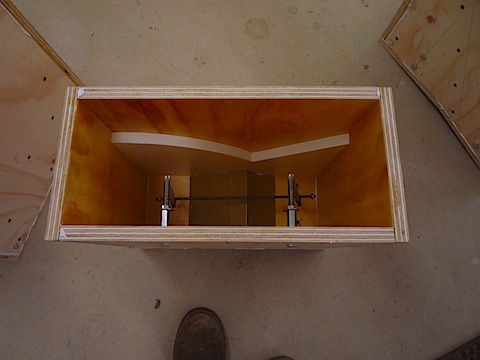
The detail is made by cutting a piece of PVC board into the negative shape of the desired step. I can foresee a day when I make the whole form out of the PVC board. I have a feeling it is going to cast very well. For now I am content to mix the new PVC board with my standard technique of using AC plywood.
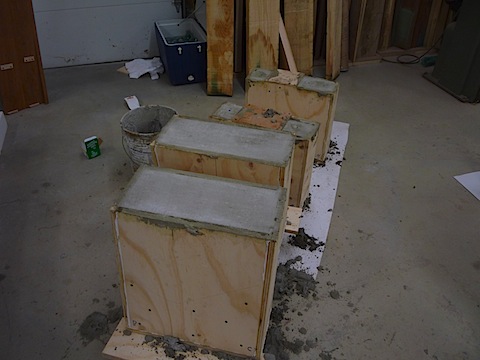
Another new development in my concrete procedure is the addition of a wet grinder with diamond polishing pads. I bought the grinder to help make the facets that I use to give each casting its unique presence. The ability to make all of the surfaces look the same regardless of the material that was used to cast them is quite liberating. In the case of these legs I can cast them with the top surface up. In the past I could only have the bottom of the feet up becasue the finish would stink. All is different now that I can grind that surface to perfection.
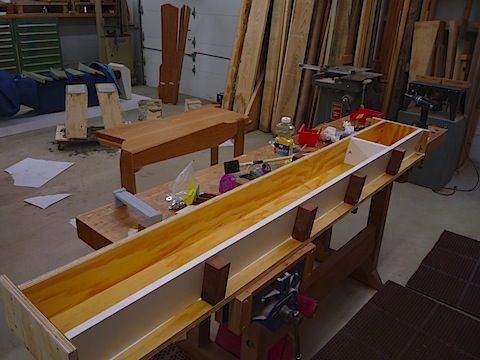
The final part that needs to be fabricated presents a number of new technical challenges. The seat is going to be fun. First of all it is made up of two separate castings that will be bolted together. This will allow me to give the seat an angle towards the center with a small gap for water to escape. The final. consideration at this stage has to do with designing some flexibility into the forms so I can vary the length. This is not a factor in my other benches because the seats have all been made of wood. My solution was to pick a maximum size for the seat and build the form to that size. I then built a sliding stop so that I could cast into a smaller portion of the form.
There are plenty of other issues that i will need to address before I can cast the seat. To be continued…
Concrete Bench Part 1
Concrete Bench Part 2
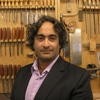 By Nico Yektai -
By Nico Yektai -New York based designer/maker Nico Yektai opened the doors to his Hamptons studio in 1995 after completing the MFA program at the School For American Craft at the Rochester Institute of Technology. The rigorous technical training complimented his background in Art History, which he studied, at Hobart College in Geneva NY. Yektai has synthesized this background into a singular style that has gained him national attention. Visit nicoyektai.com for more information
AAEH Studio Tour 2010
I will be opening the doors to my studio on July 8-10 in conjunction with the Artist Alliance Of the East End. They have been organizing studio tours in the Hamptons for the last 25 years.
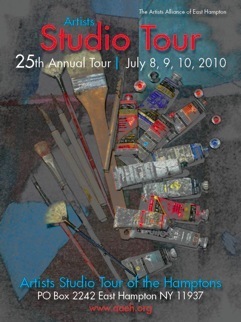
Tickets should be purchased ahead of time through a number of local businesses. The complete list can be found here at the AAEH website. The ticket price is tax deductible and will help the Artist Alliance continue to support the Artists who live and work in The Hamptons.
The Members exhibit opened tonight, July 2, and will run through Sunday July 11 at 3:00pm at Ashawagh Hall in The Springs. The show offers a great opportunity to see the work of the membership and get a sneak peak at the work of the artists participating in the studio tours. More information is available here
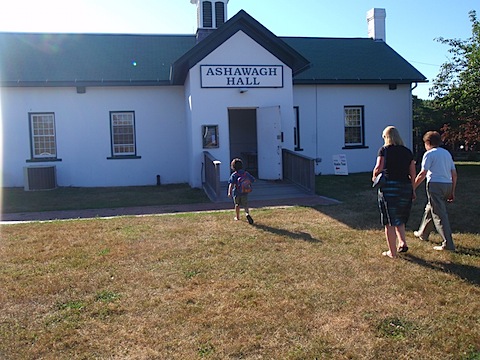
Corner Piece #3 on display at The Artist Alliance Of The East End Members show 2010. More information on this piece.
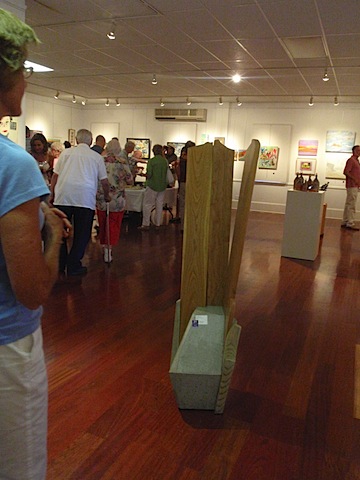
 By Nico Yektai -
By Nico Yektai -New York based designer/maker Nico Yektai opened the doors to his Hamptons studio in 1995 after completing the MFA program at the School For American Craft at the Rochester Institute of Technology. The rigorous technical training complimented his background in Art History, which he studied, at Hobart College in Geneva NY. Yektai has synthesized this background into a singular style that has gained him national attention. Visit nicoyektai.com for more information
Open Bowls 2010
I wanted to post a report from the first installment of the Open Bowls component of the Planters On and Off the Ground Show at the Longhouse Reserve in East Hampton NY. It was a big success and should only be more of a spectacle moving forward. I say that because I got the feeling from John Danzer, the juror, that bigger was better. I have never shied away from increasing the scale of my work and I already have ideas for next year.
Here are my planters and some of the highlights of construction. (that is code for disasters that threatened to derail my efforts)
I presented three planters.
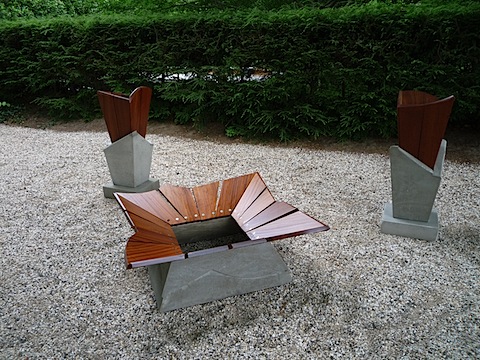
The first two are meant to be displayed together. They are about 85% clones of each other and create a nice dialogue when placed in a garden as a pair

The bulk of the variation comes in the woodwork. The sweeping curves and facets of the Sapele core are very different and encourage the viewer to circle each planter and then comare one to the other.
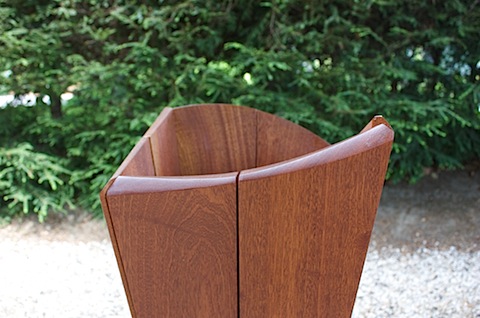
The concrete also has variation from one to the other but they are not as dramatically different as the woodworking. I designed the concrete to feel different from every angle so the owner could rotate them to achieve the movement they need for that moment in their home or garden.

The concrete is cast in two sections. The plywood box below has been filled with concrete, cured and flipped over ready to be taken apart. The center core is like a section of a pyramid and should have just popped out with a bit of encouragement. Do you get the sense that it did not quite go according to plan?
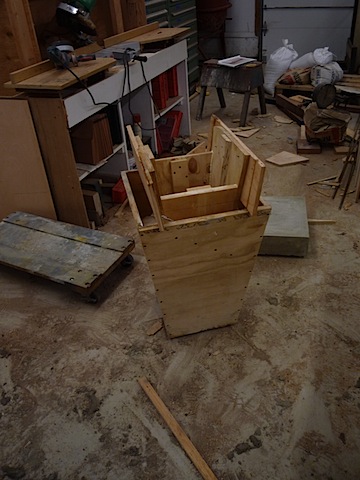
It required more than just a bit of encouragement with a BIG hammer and a pair of pry bars. Somehow the rest of the form survived so I rebuilt the core in sections that would allow for it to come out in a series of pieces.
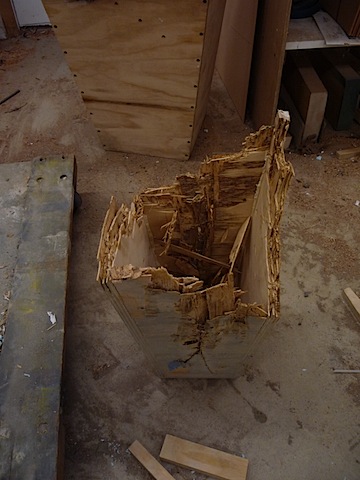
The other planter I made has the presence that I now think is deserving of the Open Bowls portion of the exhibition.
The planter measured almost four feet across.

The Sapele petals were connected to a massive concrete core. I respect that the show was about empty planters but I really want to see this one with plants. I imagine that a composition of low plants would be just as successful as an arrangement of very tall plants. I think this could be my most original and versatile planter to date.

I just wanted to point out the detail in the concrete as it will soon be making an appearance in my series of outdoor benches. The detail creates an asymmetrical step in the concrete that creates a deep shadow detail. Not only that but the specifics of creation allow me to vary this detail from one casting to the next. This detail adds a level of variation to my concrete work that should help take my next few benches to new places.
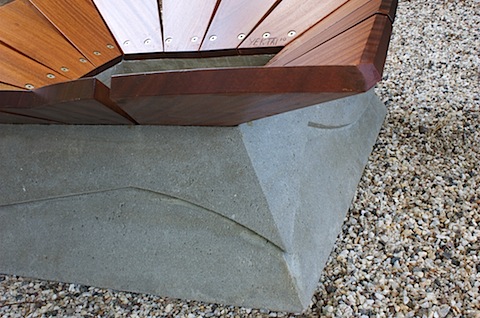
OK I had to see what this planter looked like with these two little seedlings. I am already looking forward to next year!
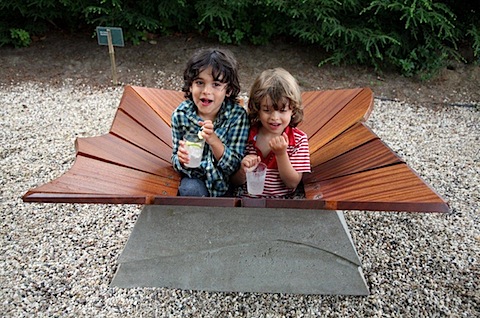
 By Nico Yektai -
By Nico Yektai -New York based designer/maker Nico Yektai opened the doors to his Hamptons studio in 1995 after completing the MFA program at the School For American Craft at the Rochester Institute of Technology. The rigorous technical training complimented his background in Art History, which he studied, at Hobart College in Geneva NY. Yektai has synthesized this background into a singular style that has gained him national attention. Visit nicoyektai.com for more information